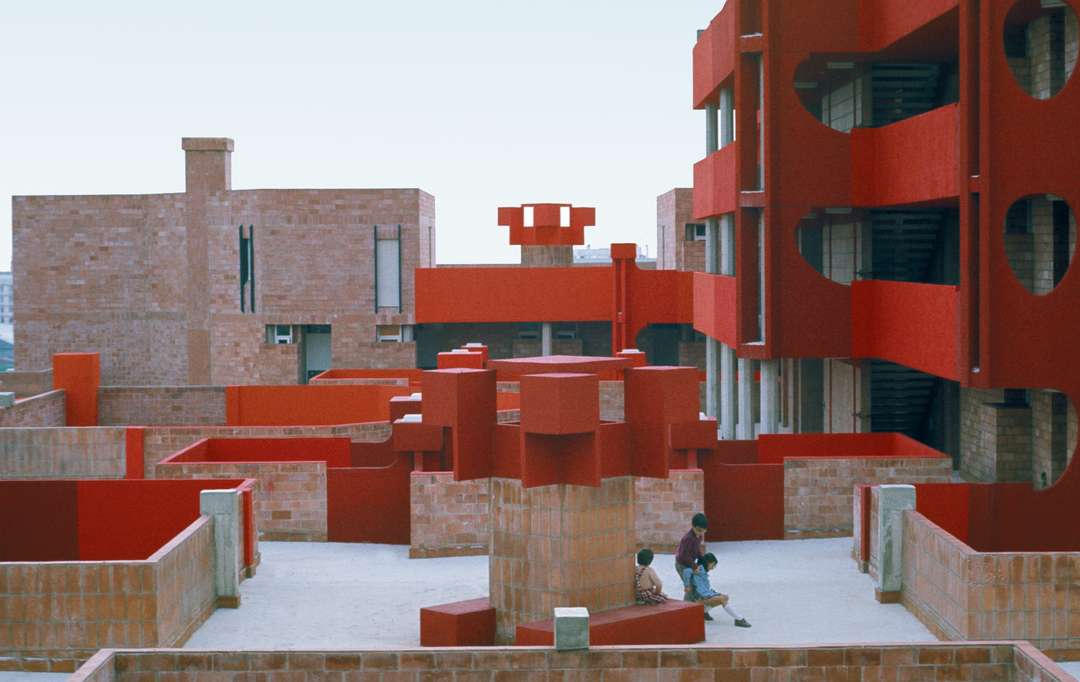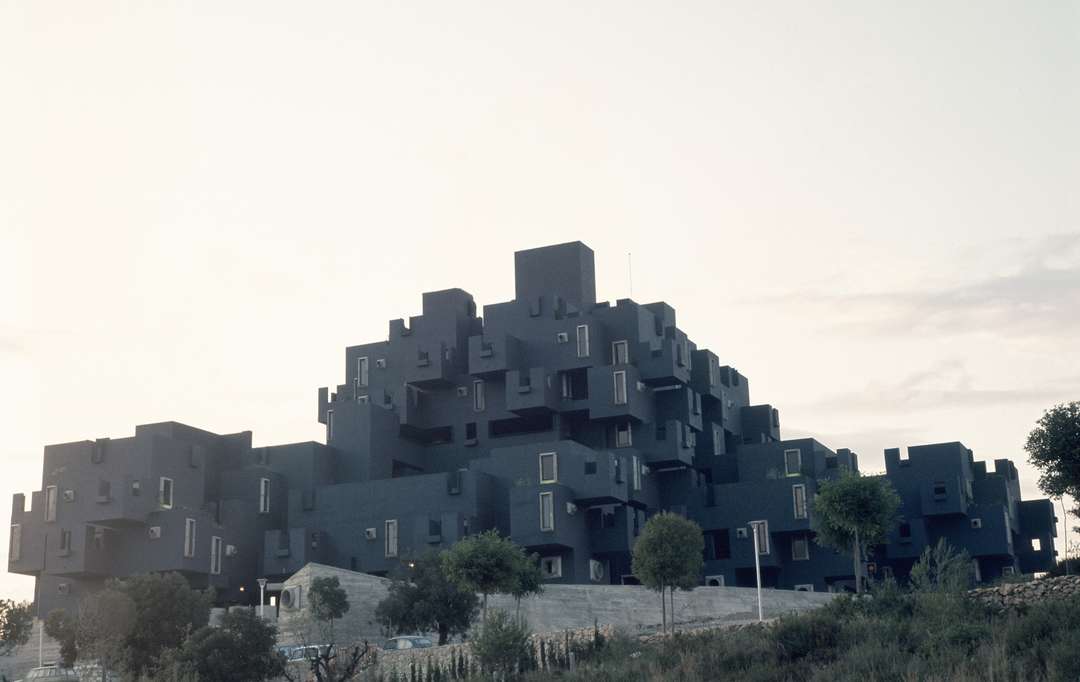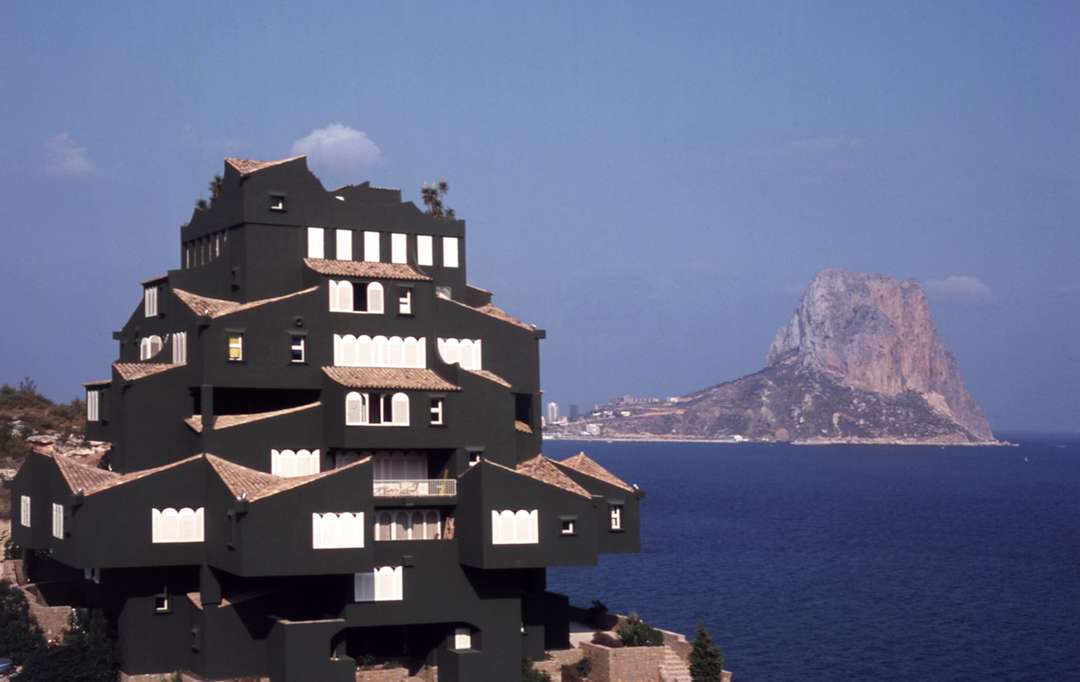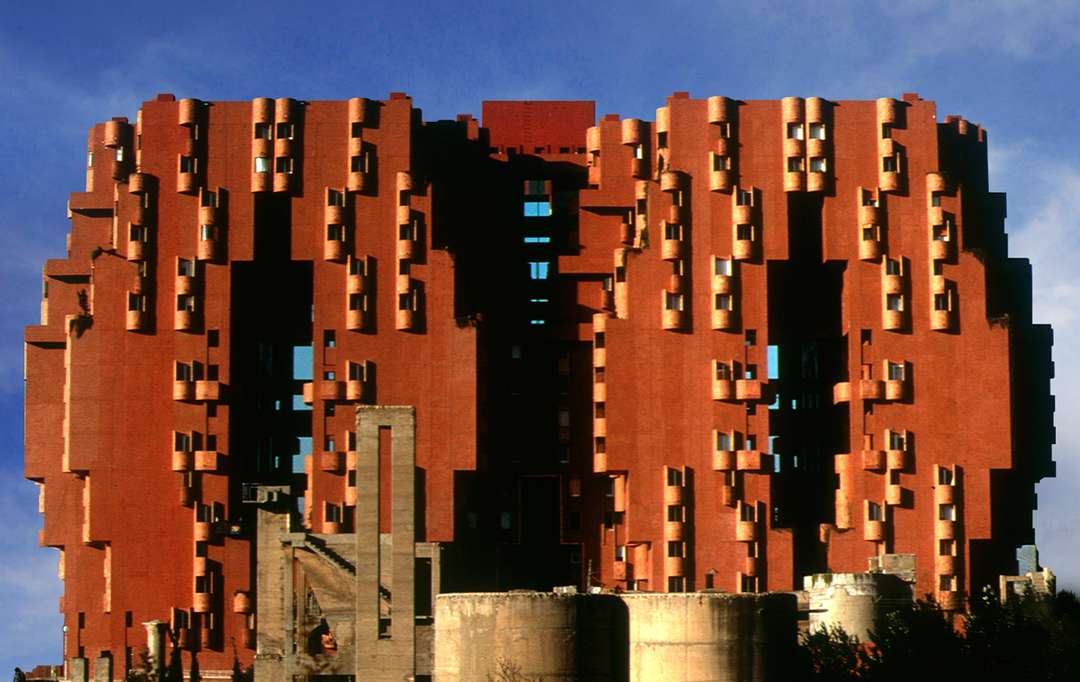When it comes to the work of Catalan architect Ricardo Bofill and his firm Ricardo Bofill Taller de Arquitectura (RBTA), selecting a single perspective — or even several — to portray a project becomes a near impossible task. Since the 1960s, Bofill and his team, operating out of a sprawling converted factory dubbed La Fabrica, have been designing surrealist housing projects that make apartment-living seem like an Escher-esque dream. In the multi-unit projects that follow, a knack for color and an uninhibited sense of space result in designs as dramatic as the landscapes they emerge from, never sacrificing the intricate spatial logic that often defines community life.
Nicaragua 99 Apartments, Barcelona, Spain, 1965
Situated in a more urban context, the Nicaragua 99 apartments uses a fanned-out footprint to take advantage of its small site. The rent-controlled apartments within thus have shifted views from their loggia, while the volumetric intricacy is carried through to decorative elements on the roof. Like much of Bofill’s work, the design is reminiscent of a fractal, each pattern and element collapsing into the next.
Gaudí District, Reus, Spain, 1968
Designed to answer the needs of an influx of immigrants in the 1960s, this low-cost housing project distinguishes itself from the unsuccessful, dormitory-style appearance of contemporaneous models. RBTA sought to create a bustling communal environment, placing circulation at the forefront of the design and allowing housing units ample access to daylight. In this scheme, where no dwelling is identical, swathes of color differentiate and enliven the sprawling massing.
Kafka Castle, Sant Pere de Ribes, Spain, 1968
This housing project, named in homage to Franz Kafka and his eponymous novel, was inspired by the Archigram movement and Bofill’s ongoing penchant for the cube. Without an overarching plan but with the help of mathematical equations, a series of cubes were constructed around staircases, intersecting with each other to result in 90 individual dwelling spaces. A pool, sauna and restaurants round out the surreal development, its dark mass jagged against the glare of the sun.
Xanadú, Calp, Spain, 1971
Xanadú is an apartment building constructed as part of a larger development known as La Manzanera, an experimental resort complex on a seaside cliff that Bofill gradually turned into his spatial laboratory. A blend of influences, from the archetype of the castle to the rough edges of the nearby crag, the volumes of this project surround a central circulation axis and are differentiated by types of human activity. Vernacular details such as handrails and pitched roofs mark a rupture in Bofill’s loyalty to modernism, but soften the imposing quality of the building’s matte-black finish.
La Muralla Roja, Calp, Spain, 1973
Also part of La Manzanera, La Muralla Roja adopts a lighter color palette to define sections of its labyrinthine tower structures. RBTA used theories of constructivism to reinterpret the intricate, outwardly confounding urban plans and adobe materiality of the traditional North African casbah. The result is stunning — set against the rich blue of the Mediterranean, the housing complex offers an infinite number of vibrant sightlines.
Walden 7, Barcelona, Spain, 1974
The 18 towers that comprise Walden 7 escape the monotony of the traditional housing block with the strategy of volumetric shifts, resulting in a complex tangle of circulation and a series of internal courtyards. The rounded individual balconies add formal contrast to the external structure and give the cavernous interior openings a rich, inviting texture. It stands today as a hypnotic testament to the design potential of low-cost housing.






